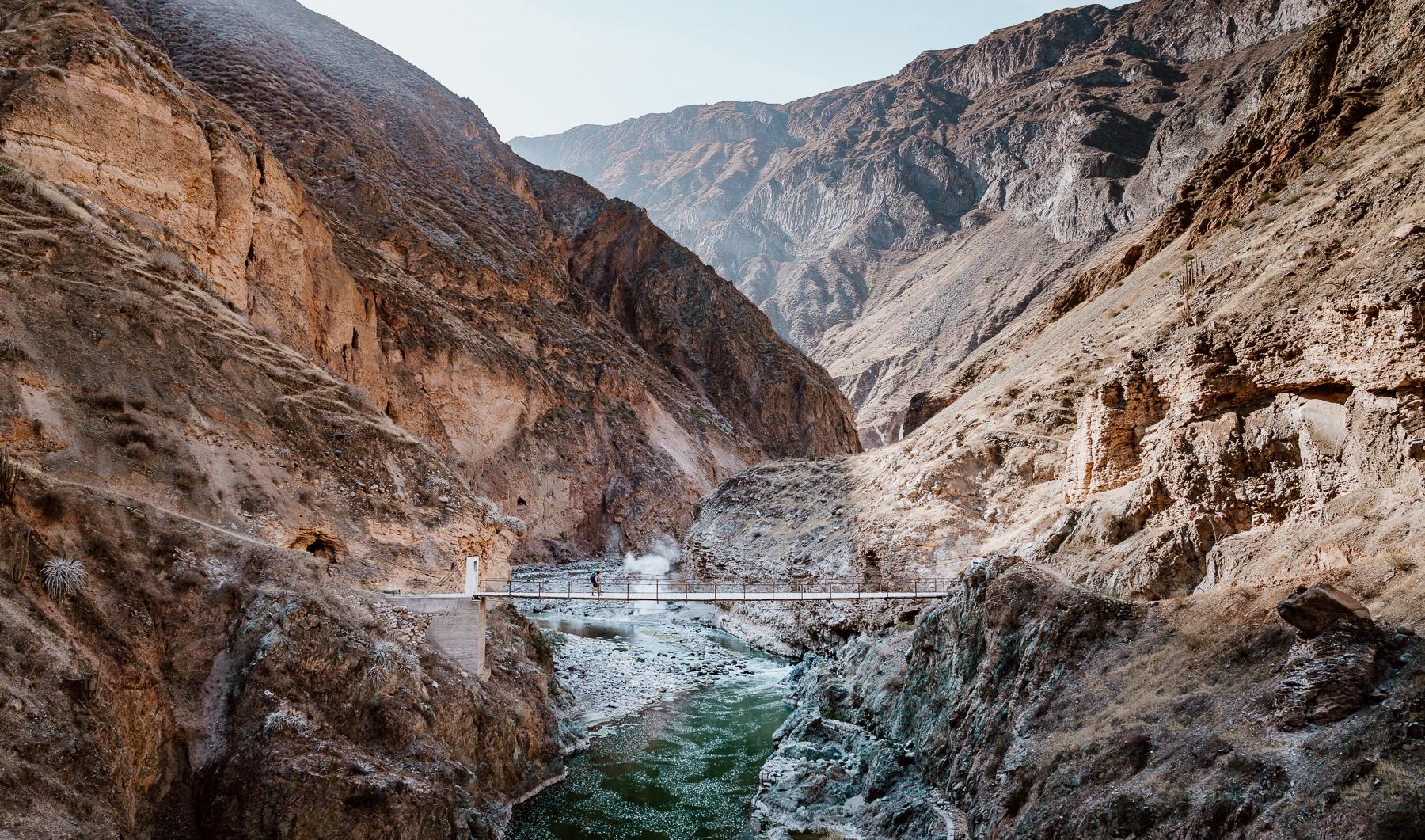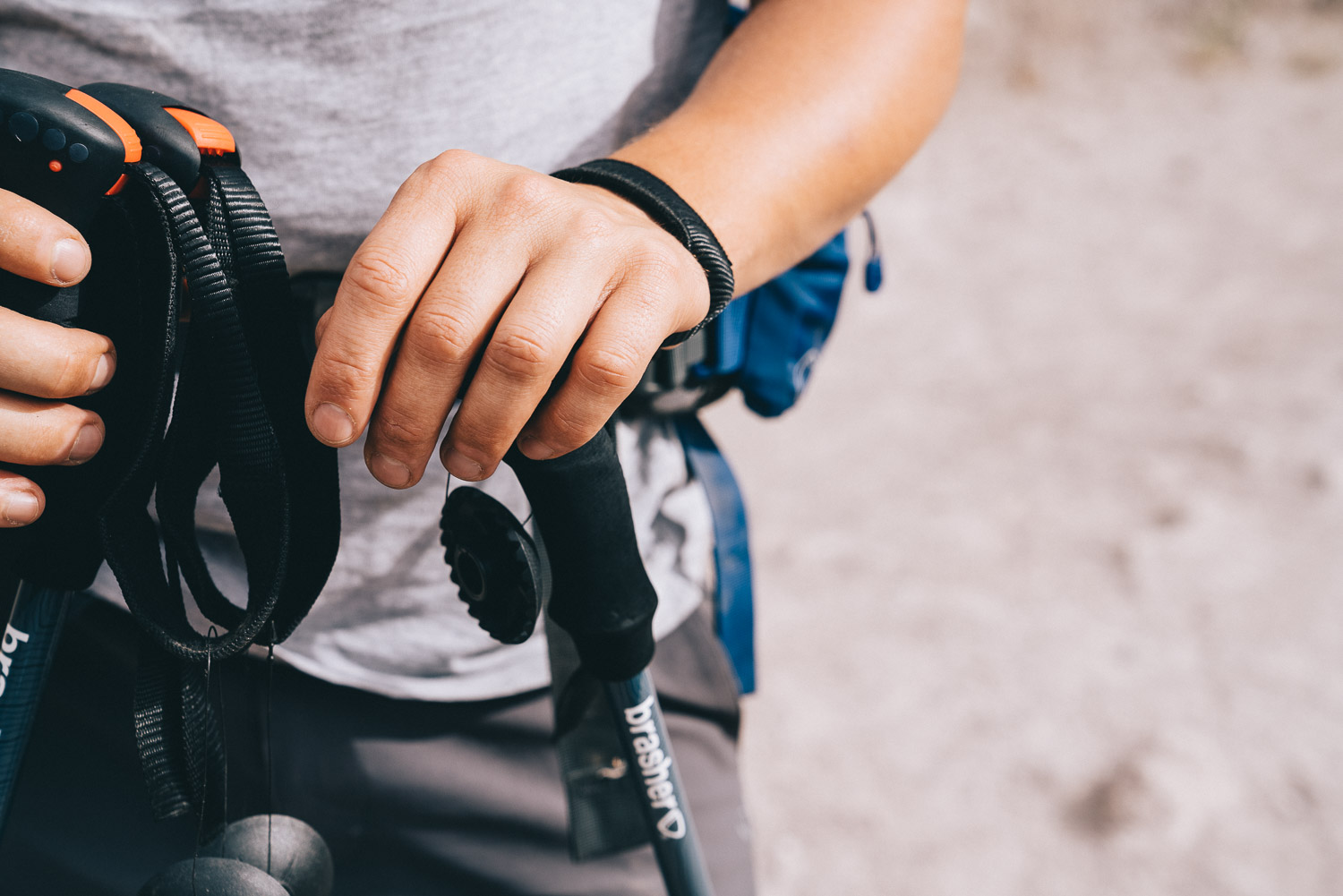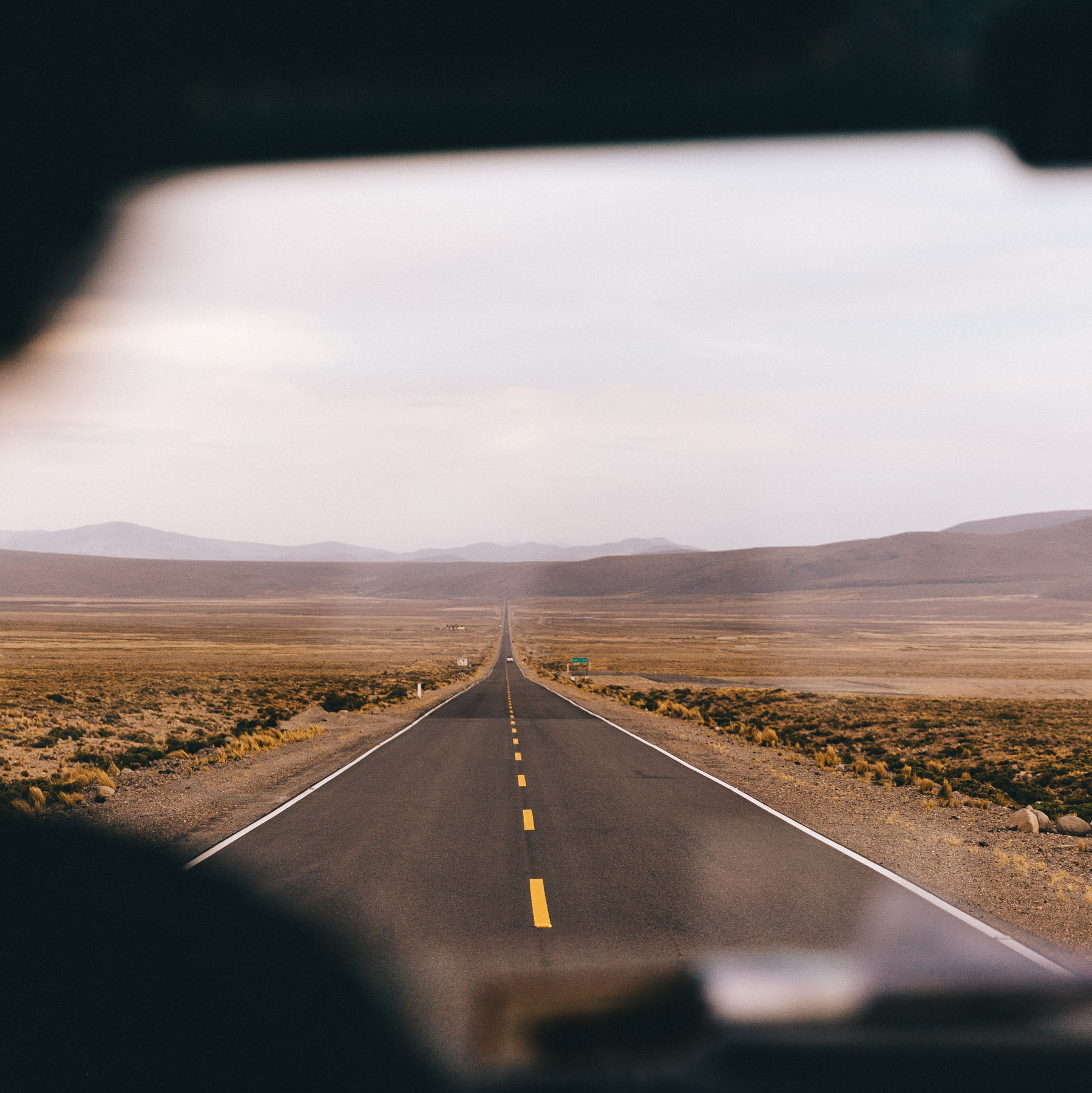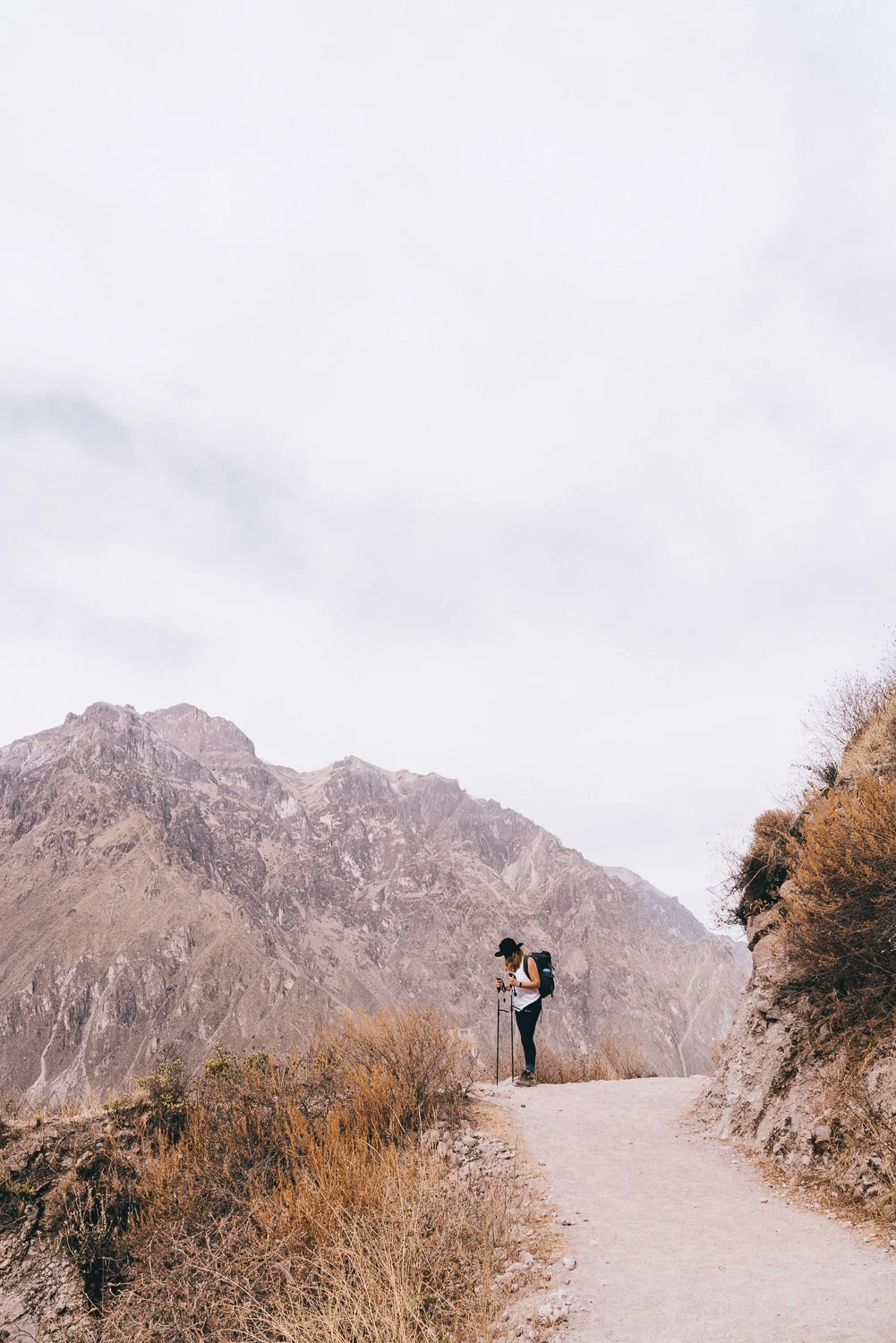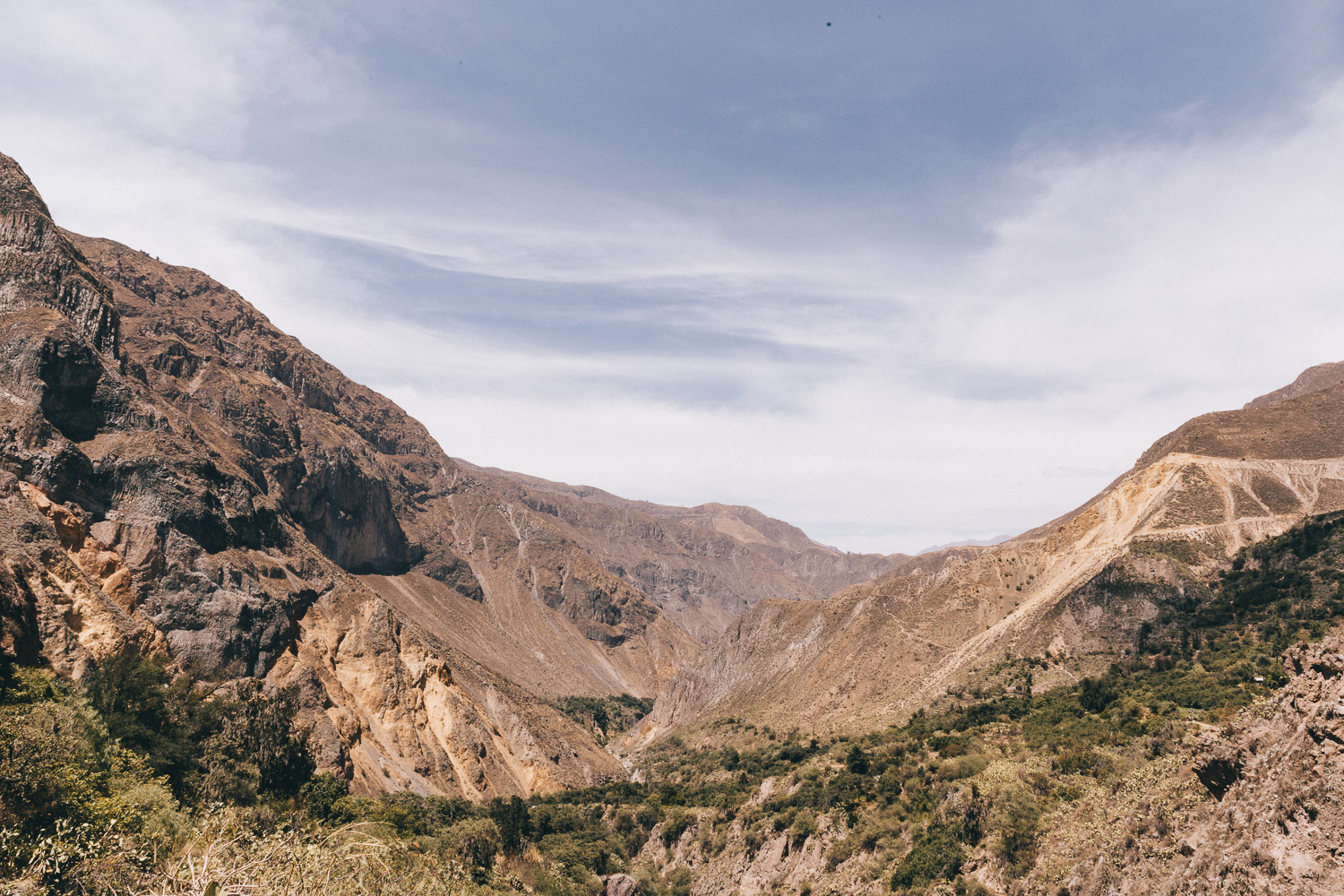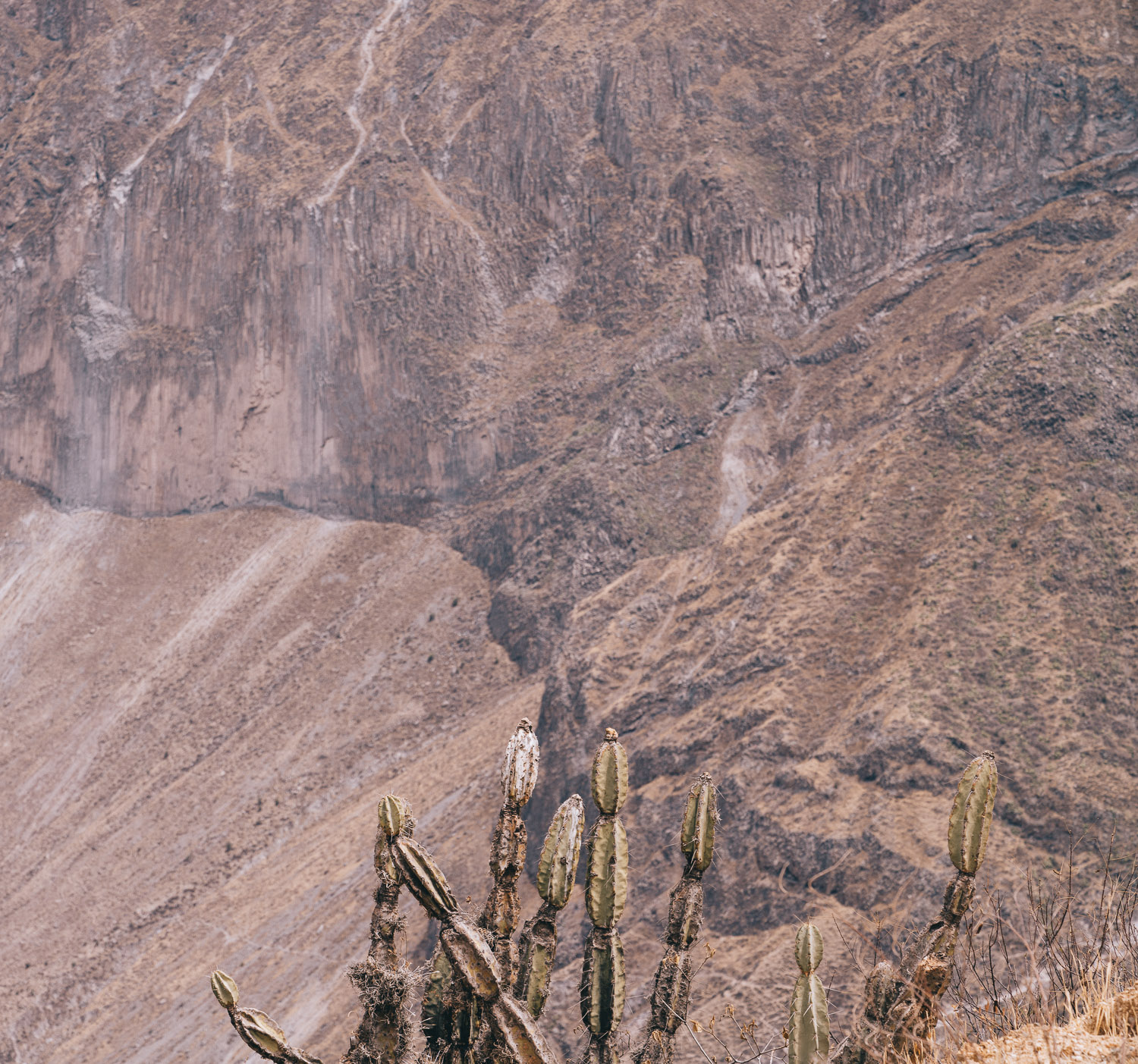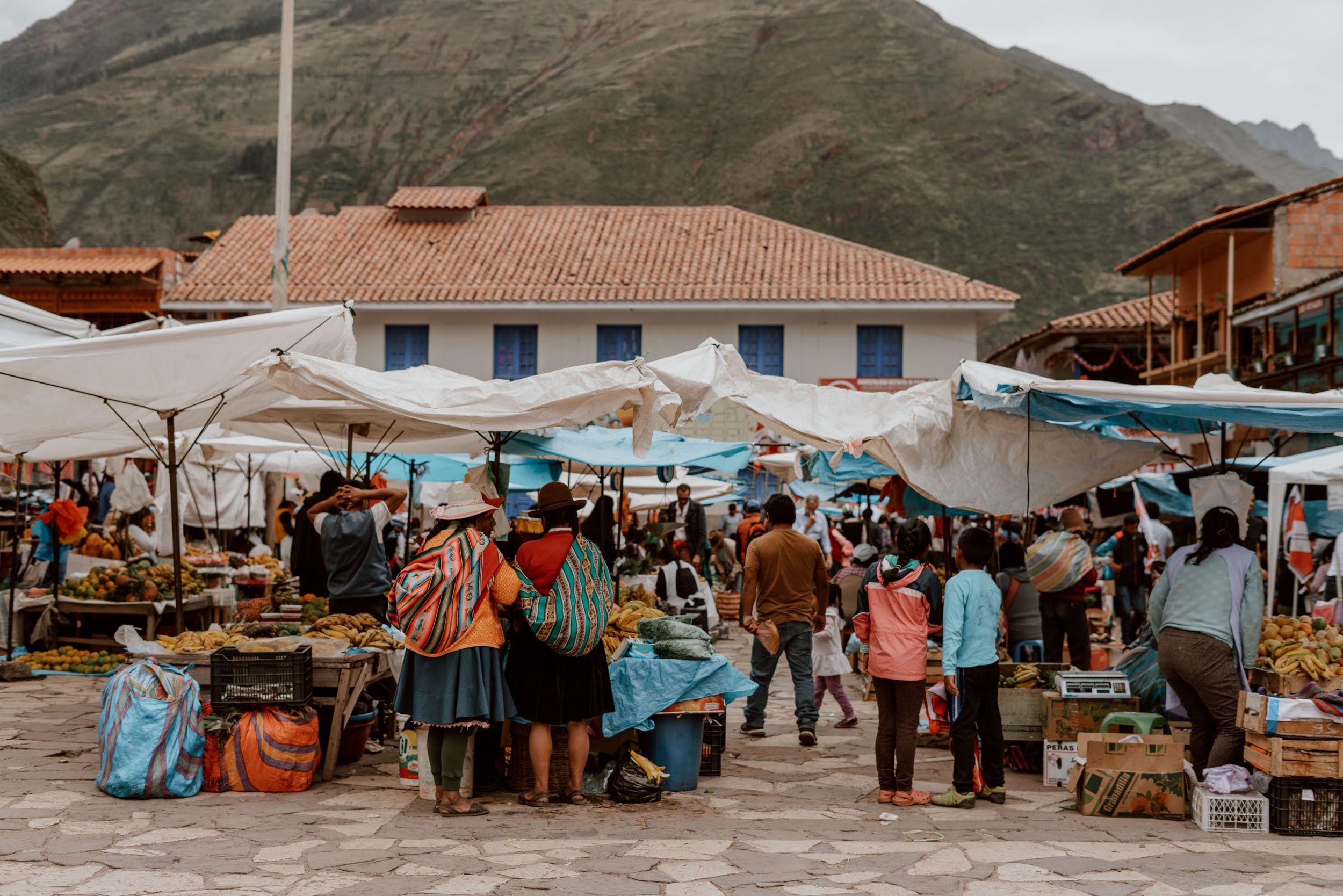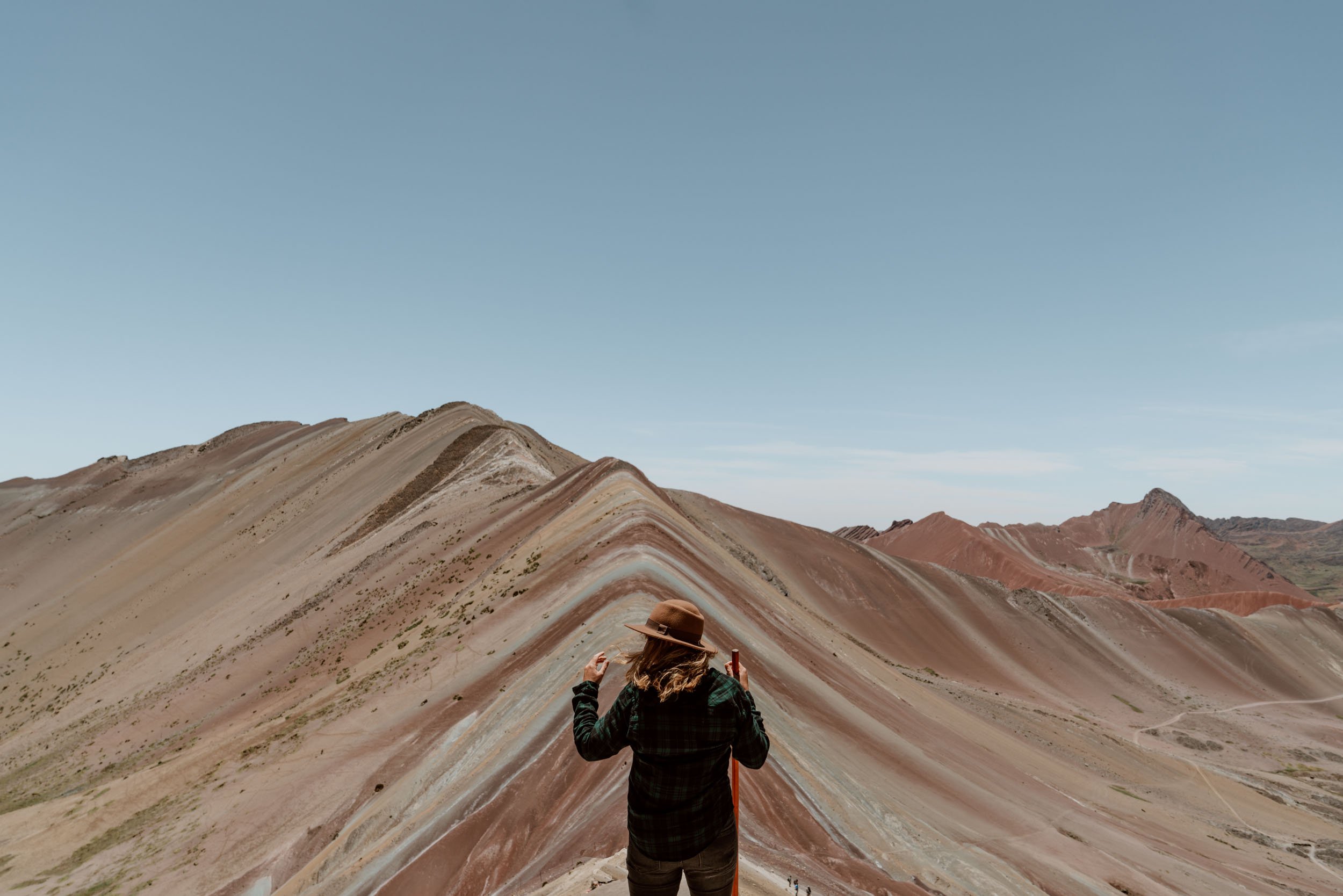One of Peru’s big-hitters, the Colca Canyon is a must on most Peru itineraries. If you’re keen to add it to yours be sure to read this comprehensive with everything you need to know from what it actually is, how long it takes, whether you need a tour or can do it independently, how much it costs and how to get there, alongside all you need to prepare.
This is our definitive guide to the Colca Canyon Trek.
Updated August 2023
The Colca Canyon - Cañon de Colca in Spanish - offers travellers the opportunity to get up close and personal to countryside life in Peru, spot soaring Andean condors, bathe in secret thermal baths, uncover jaw-dropping vistas, stay in an oasis, and hike along dusty roads for two or three days into the depths of one of the world’s deepest canyons.
It should come as no surprise therefore that it continues to be one of Peru’s most popular experiences for those in search of adventure.
However, the planning process for hiking the Colca Canyon is definitely less straightforward than for many of our other favourite hikes in Peru. Not only are there at least half a dozen variants to the route which differ in duration, difficulty and drama, but the transport connections from Arequipa to the several start-points are not terribly straightforward, the myriad of different tour types can be misleading if you choose not to do it independently, and mutliday hikers will have to carry (pretty much) everything with them on the trail.
And that’s before we have even got to that gruelling switchback-heavy ascent on the final day.
As many curious travellers like you will want to make a trip out here part of your Peru itinerary, we wanted to make things a little clearer and share our personal lessons, practical tips, and planning advice after our own three day, two night Colca Canyon Trek without a guide.
Here’s everything we think you really need to know before the Colca Canyon to help you have the best experience for your own travel style, hiking ability, and budget.
What Exactly Is The Colca Canyon Trek?
Based 130+ miles outside of the beautiful city of Arequipa, the Colca Canyon is, according to who you’re talking to, either the world’s second deepest canyon or not even Peru’s deepest canyon*. Either way, it’s pretty bloody deep (3,300 metres at one point), pretty bloody impressive, and is DEFINITELY twice as deep as America’s Grand Canyon
Unsurprisingly, it’s also home to some of Peru’s most captivating scenery (and this is a country that doesn’t struggle for beautiful views), as well as one of the best viewing points for South America’s most famous bird - the condor - which can oft be seen gliding on the thermal winds.
However, those expecting complete isolation in the depths of the canyon will be surprised that small rural communities have endured and persevered here for centuries, and continue to live out a very traditional lifestyle between the arid quarry-like ridges and the surprisingly lush plots which lie by the Rio Colca.
If you’re looking for adventure, landscapes, and something a little bit different to back home, then you’ve come to the right place in Peru.
* Its neighbour, the Cotahuasi Canyon, is actually deeper but is much more remote and relatively inaccessible to travellers.
How Long Does It Take?
Visiting the Colca Canyon can be done in a few different ways, but the most common are:
A one-day tour from Arequipa (like this one or this one)
A two-day, one-night independent trek, guided trek, or guided tour
A three-day, two-night independent trek or guided trek tour (like this one)
We discuss these options, the key differences between them (hint: it ain’t just the length of trip or price), and which will be best for your own travel style and budget, later in the post. If you can’t wait, just scroll down to the ‘Colca Canyon Trek vs. Colca Canyon Tour’ section.
Where Does The Colca Canyon Trek Start?
All roads lead to Cabanaconde, a small town perched on the canyon’s precipice. From here, there are three main start points for the hike, depending upon which 2 or 3 day route you’ll be following.
How Do I Get To Cabanaconde?
This is where things start to get a little more challenging, regardless of whether you’re doing a tour or independent hike. Although Cabanconde is the official starting point of the Colca Canyon Trek, the city of Arequipa is actually where you need to make your preparations and start your journey.
Arequipa is the prettiest city in Peru and features on most itineraries on its own merits, so it’s inevitable that you will spend some time here before or after your hike. To reach Cabanaconde from Arequipa however involves a four-hour drive (on a good day - it can take up to six hours depending on traffic and mode of transport) and a very early morning start.
If you take a one or two-day guided tour, then all your transport to/from Arequipa will be arranged and covered by your tour operator; it will however involve a departure time of 3 a.m. from your hostel.
Yep, you read that right - a 3 a.m. PICK-UP!
If you plan on hiking the Colca Canyon without a guide however, then you will have two options: one of the handful of large but very slow buses from Arequipa Bus Terminal, or the quicker and more frequent colectivos (public minivans). Both involve an ever so slightly later start (ranging between 4 a.m. - 7 a.m.) and go via the town of Chivay. We found out the hard way which was the best option to take after reading some bad advice online and receiving out-of-date bus timetables from the official tourism office in Arequipa (that was a very stressful morning, let me tell you). However, the benefit of our mistakes is that you can learn from them and get the right information!
We have shared full correct details and instructions on both public transport options to Cabanaconde based on our own experience in ‘How To Get from Arequipa to The Colca Canyon’.
Whichever option you take, the silver lining is that the drive from Arequipa to Cabanaconde, via Chivay, is ABSOLUTELY stunning. We have travelled a lot in South America, and the journey back in a minivan still ranks as one of the most visually satisfying we’ve experienced - smoking volcanoes piercing blue skies, arrow straight tarmac towards the horizon with nothing but dusty copper plains on each side, groups of wild alpacas lazing together, and steep stacked dull green hills and slopes guarding the way with Incan terrace tiers and locals in colourful traditional clothing dotted throughout.
No matter how sleepy you are, try to keep your eyes open.
Tip // Hikers and day-trippers should leave their large backpacks and luggage back at your hostel in Arequipa - most offer a free luggage storage room for guests. As we travel with a lot of tech however, we have several valuable items we need to store securely when out on multiday hikes and these simply can’t be left in luggage storage rooms (never leave your valuables in them).
Because of this, we spent an entire morning in Arequipa trying to find a good hostel which would also offer small personal secure lockers for our laptops and spares lenses, as well as being a good place to stay in Arequipa. Unfortunately, the excellent hostel we chose has closed down recently so if you find an alternative option that we can recommend, we’d love to hear from you in the comments!
What Is The Best Time of Year to Hike the Colca Canyon?
Peru has two seasons - dry and wet - and it is possible to do the Colca Canyon Trek year-round. Each season comes with their own pros and cons however:
Dry Season (May - October)
Pros | The chance of rain, as the name would suggest, is significantly reduced and you can expect hot, dry mornings and afternoons. There’s also an increased chance of spotting condors (but they can be seen all year).
Cons | Dry season also coincides with the highest tourism season in Peru (June - August), so expect to see more hikers on the trail and increased demand for tours. Accommodation will also be more difficult to secure. Lastly, nighttime temperatures in dry season drop significantly, so expect very cold nights.
Wet Season (November - April)
We did the Colca Canyon in November, and we were ready for some rainy days. Thankfully though we had very dry, sunny days throughout - if you hike in rainy season, please let us know your experience in the comments.
Pros | A less popular time to hike, so the number of people you’re sharing the trail with are notably reduced. Temperatures at night are also less chilly, but you’ll still need extra layers once the sun goes down.
Cons | If it rains it wouldn’t be that much fun, and the steep descents would become very slippy.
Colca Canyon Trek vs. Colca Canyon Tour
What’s the Difference?
We prefer, wherever possible, to do hikes independently. However, in Peru this isn’t always possible (such as on the Inca Trail), and we know that many travellers prefer the convenience or company which comes with an organised group hike or a private tour - especially if you are in the country for a short time or unable to hike a lot. If you know that you’re going to do the Colca Canyon without a guide, then you can just scroll down to the next section ‘Preparing To Hike the Colca Canyon’.
In terms of tours, you will have no shortage of options in Arequipa and online, but it’s important to understand exactly what these involve in terms of experiencing the Colca Canyon before booking. Most that refer to themselves as ‘Colca Canyon Tours’ will provide transport to/from Arequipa, an English-speaking guide, sightseeing of the canyon, pueblo visits and condor viewpoints; these will involve little to no hiking within the Canyon and sometimes include a night’s accommodation in Chivay rather than in the canyon itself.
These are more appropriate for those short on time or the less active traveller who still wants to see the canyon, but it’s important that you fully understand the itinerary of such one or two-day tours in advance so that you aren’t disappointed or surprised by what they include (or leave out) - we’ve linked to a few highly-rated ones below.
Colca Canyon trek tours - note the word ‘trek’ here - will however take you and a group down into the valley along one of the most popular hiking routes, and include either one or two nights accommodation, transport, a guide, and most meals - see an example of the 3-day trek tour itinerary here. These are the best option for those who want to hike, but don’t want do it independently. You do however have to have a relatively good level of fitness, prepare / pack accordingly for a relatively challenging multiday hike, and factor in three full days into your Peru itinerary.
How Much Do They Cost?
If you’re going to do it independently and are a budget traveller, then you’ll be happy to know that it’s incredibly cheap to do this trek - and you can read this post on what we spent on the Colca Canyon to see our full costs breakdown.
For tours and guided hikes, booking them in Arequipa is the cheaper option. All hostels and agencies offer them, but most simply pool clients together rather than offering anything bespoke, so be sure to shop around for the best upfront deal.
If you don’t have much flexibility on your Peru travel itinerary however, then booking in advance online with trusted provider is a decent alternative:
3 day Trek Tour | Following the most popular 3 day trek route, with two nights spent in the canyon. Find out more information and book on Viator or Get Your Guide.
2 day Guided Trek Tour | A very long first day, but this trek tour takes you into the canyon for one night - see the itinerary here.
2 day Colca Canyon Tour | Sightseeing on the first day with a night in Chivay, with condor spotting, village visits, on the second day - find out more.
1 day Colca Canyon Tour | It’s a very popular option with those short on time who really want to see the Canyon and spot the Andean condor, but it involves a round-trip of at least 8 hours from Arequipa so it’s a long old day.
This tour is another good alternative - however, it’s worth knowing that you can often get the two-day option for around the same price!
Most Colca Canyon tours from Arequipa and online do not include the S/.70 (£16 / $22 / €19) Colca Canyon entry ticket, which is mandatory for anyone entering the canyon; it’s only possible to buy this in cash on the day of your hike.
Do You Need to Book A Colca Canyon Tour in Advance?
Most hikes, treks and tours that you will want to do in Peru, do not have to be booked in advance (the exception being The Inca Trail); the same can be said of the Colca Canyon.
As we mentioned, if you’re on a really tight itinerary then it makes sense to book ahead and have it all organised around your arrival dates in Arequipa. If however you’re more flexible and on a longer trip through Peru or South America, then you can rock up to Arequipa and find one there a couple of days beforehand.
What About Condors?
We have hiked to spot condors in eastern Bolivia, and so this particular adventure wasn’t about them for us. However, a large number of people make their way to the Colca Canyon specifically to have the chance to spot these majestic birds.
The Mirador or Cruz del Condor is a viewpoint 45 minutes or so before Cabanaconde, and all day-tours will stop here (two-day tours will usually do so too, but it might be on the way back on the final morning). It gets very busy from 7 a.m. - 10 a.m., but this is also your best chance to see the condors gliding on the warm updrafts.
For independent hikers, note that due to timing and travel from Arequipa, it may not be possible for you to stop at the mirador. If doing so is a big reason for your trip, then plan accordingly and perhaps add on a night in either Chivay or Cabanaconde on your first day so that you can ensure you can visit the viewpoint on the morning of the first day or second day.
We did actually manage to spot one Andean condor above us whilst on the trail, and it felt like fate. We were at our lowest ebb on the final stretch on the final day, when a shadow loomed over the green fields; above us was a condor soaring quite low so the sheer size of his wingspan felt ominous. It helped us to forget how sore our feet were for a few minutes at least!
Preparing To Hike the Colca Canyon
If you’re worried about your ability to hike for two or three days, or don’t know how on earth to pack for this type of adventure, then you’ll find all the answers in this section.
How Fit Do You Need to Be?
We’re not going to lie to you: some people find this trek really, really, really tough. A few won’t struggle at all, but most will find it a challenge.
Emily, who has hiked a hell of a lot in South America, actually cried on our last day’s ascent.
Three times.
On separate occasions.
Emily has never previously cried on a hike, and hasn’t done so since either - not even on Colombia’s Lost City Trek.
Part of this torture was due to the fact we picked the most challenging three-day route, but everyone except Ranulph Fiennes in his pomp will have a moment on their final day’s ascent back to Cabanaconde where they want to stop, can’t face another false summit or switchback, or have to beg their legs to stop screaming and keep walking. Whichever route you take for your hike, you are guaranteed one hell of an uphill climb on your final day (seriously, it’s up to 1000 metres up, up, and only up)!
So, as with most multiday hikes, we always recommend being realistic with yourself about your level of fitness and your limitations, and pick your route accordingly. You don’t have to be super fit to do the Colca Canyon, but it certainly helps if you’ve done some hikes or regular exercise in the previous weeks and months. Perseverance and positive mental attitude will also be essential at certain points when you find it tough going.
The good news is that there are definitely easier ways to conquer and experience the canyon than the three-day clockwise route we chose (and we’ve outlined these in our ‘How To Pick Your Colca Canyon Route’ post).
What About Altitude?
Peru takes your breath away, and the Colca Canyon will do so more than anywhere else along its coast. This entire trek takes place at altitude, which means oxygen is limited and your body will have to work that little bit harder each step of the way.
If you have read any of our other hiking guides for Peru (if not, then this is the best place to start), then you’re probably a little bored of us constantly talking about the importance of preparing for the altitude. But the reality is that underestimating its impact is a surefire way to make a multiday hike much more difficult and potentially dangerous.
Some of you may be wondering how, in one of the world’s deepest canyons, can it still be high up? Well, this is Peru and so so many places that you’ll visit are quite-bloody-high-above-sea-level...even incredibly deep canyons!
The Cruz del Condor, for example, is 3,700m above sea-level. Cabanaconde is 3,287m above sea-level. Even Sangalle - the oasis from which many of you will start your ascent back up to Cabanaconde - is at 2,100m. Going up by more than 1,000m on your final day - whilst you’re already at quite a high altitude - is never going to be a walk in the park (as Emily can tell you).
It is therefore highly likely that you will experience some of the worst effects of altitude sickness on your Colca Canyon hike (and even on your tour) unless you prepare for it and give yourself at least 24 hours to acclimatise beforehand in Arequipa.
For our trip, as Arequipa was the first stop at altitude, we allowed ourselves two days there to explore and acclimatise before setting off to Cabanaconde; if you have already visited Cusco directly beforehand, then you will likely have already become accustomed to the altitude.
Further Reading | Learn more about how to prepare for altitude sickness in South America.
What Do You Need To Pack For The Colca Canyon Trek?
We have a tendency to overpack for most of our adventures, but we knew that we’d have to pack light and pack smart for this one; independent hikers and those on a guided hike will have to carry pretty much everything they’ll need for the two or three-day route.
The good news is that you don’t really need anything particularly fancy or specialist for this trek, and sleeping bags, tents, or any other camping equipment are not required. We’ve listed exactly what we packed - and what you can definitely leave behind - in our Colca Canyon Packing List.
For everyone visiting the Canyon for a night or two, the following items are absolutely essential due to the nature of the route, the style of accommodation, and the climate:
Hat | Suncream | Head Torch | Powerbank (the accommodations we stayed at did not have electricity) | Plenty Cash | Water Filter Bottle | Warmer Clothes for Evening | Toilet Paper
There are a handful of very small tiendas (shops) on the route if you need extra fluids or snacks. There are no ATMs on the route and cash is king, so make sure to bring enough to cover your time on the route plus emergencies; it’s always best to take a third-more than you think you’ll need PLUS emergency.
Travel Tip // Leave your large backpacks and luggage back at your hostel in Arequipa - most thankfully offer a free luggage storage room for guests. We do not recommend leaving any cash or valuables here as the rooms (although often locked) see a lot of foot traffic with people leaving / collecting their bags. World Backpackers* was the best option for us, but if you don’t have valuables to store then you can find more hostel recommendations in our traveller’s guide on the best things to do in Arequipa.
*It’s been brought to our attention that World Backpacker’s may not be taking reservations currently. If anyone could confirm this, or offer an alternative hostel with excellent bag storage options we’d really really appreciate letting us know in the comments. Having somewhere safe to leave our stuff was super important to us, and we know it likely will be to others reading this post. Thanks.
Do You Need Special Travel Insurance?
Yes.
We would never travel without taking out insurance (if you’re not convinced, read this post) and having the necessary travel insurance arrangements in place in absolutely necessary if you’re planning on hiking the Colca Canyon. This is after all an incredibly remote area and in the event of emergencies, assistance is going to be required.
It’s worth noting that not all standard off-the-shelf travel insurance policies will cover you for activities at altitude, so you need to ensure that this is covered when buying your single or multi-trip policy. True Traveller is a respected travel insurer which we have used on South America trips that cover high altitude treks (just make double sure that you’ve selected the right option).
If you’re confused about buying travel insurance, read this short guide.
Picking The Right Route
Now that you know how much its costs, how to get to the Colca Canyon from Arequipa, whether to take a tour or not, and exactly what to pack, only the final and most important part of your planning remains: picking the right route for you!
It is a decision that will need to be made based upon personal fitness levels, time available to hike, and sense of adventure. Whichever route you choose, you will have an amazing time, but we have to stress that not all trails are created equal.
We initially had in-depth information on this topic included within this section, but after selecting the most popular routes and providing enough information for you to make an informed choice, we quickly realised that this is a planning element that requires its own post.
So, for all the good stuff and details, read ‘How to Pick Your Colca Canyon Route’ to pick which of the seven possible routes is the right one for you.
What about directions and maps?
After planning out our route, we simply depended on an offline Google Map on our phones with all the locations starred. All the trails which we followed for the three-day hike are marked on Google, whilst Maps.me is also a good offline mobile map option.
This, the offline GPS, asking hostel owners in the morning for directions, and the fact that the trails are relatively well sign-posted and difficult to get majorly lost on (you really don’t have to go off them or take many right or left turns which aren’t marked), was enough to keep us on track*.
However, having a paper map in addition isn’t a bad idea, and these can be purchased in Pachamama Hostel; we have also created an interactive Colca Canyon map to help you visualise the various trails and options.
For every single hiker, for reasons of logistics and health, try to start early each day to avoid the worst of the sun.
* The accommodations we stayed at didn’t have electricity, so keeping your phone charged with your own lightweight travel powerbank is essential.
What if it all goes wrong?
We have completed every hike we’ve ever done in South America, but we know that not everyone finishes for various reasons. Although we would strongly advise against doing the Colca Canyon Trek if you are physically unfit, have never hiked before, or have medical concerns, there are fall-back emergency options of a mule / donkey to transport you back to Cabanaconde if you really cannot complete the route. There is also a bus from the road before Llahuar up to Cabanconde (but the road it goes along looked bloody terrifying from a distance). We understand it leaves every day between 11.30 - 12 p.m., costs S/. 10, and takes 1.5-2 hours. One section of the Canyon route does also see a few trucks and lorries.
Sticking with it and completing the hike on your own two feet is however the least complicated way to get out and back. There is not much phone signal in the canyon and, if hiking alone, always tell someone that you’re going on the hike and when you’ll get back in contact.
In the event of medical emergencies, it’s essential that you have the right travel insurance in place before you travel - for European travellers, we recommend TrueTraveller, a respected provider for backpackers and intrepid travellers.
How To Get Transport Back To Arequipa
Your legs will be tired, you’ll be thirsty, sweaty and a bit smelly, but your final challenge is making sure that you arrive back to Cabanaconde in time for one of the few buses to Arequipa. This is why leaving early enough on the last morning for the ascent for Sangalle, Llahuar, or San Juan de Chuccho is essential - note that if you ascend from San Juan de Chuccho, you will have a an additional 15-20 minute walk back into the centre of Cabanaconde.
Buses timetables have a tendency to be updated with relative frequency, and below you can find details of departure times provided by a lovely reader last year: there are several buses back to Arequipa per day:
06.30 (Reyna) | 09.30 (Andalucia) | 13.30 (Reyna)
If you visit and discover that the timetable has changed, we’d love to hear from you in the comments so that we can update this post with the most recent departure times.
The bus leaves from the main square in Cabanaconde and a ticket all the way to Arequipa costs S/25. These get very full, so it’s best to go to the shop opposite (it has bus company signs on the walls outside) to purchase your ticket in advance - this should also guarantee you a specified seat (there was a lot of drama on our bus back about this!)
As was a common theme for our Colca Canyon experience, we expected that there would be regular colectivos running hikers and locals back to Chivay (after all, we took one there) as an alternative to the bus...but the five people we asked insisted that these didn’t exist. We remain certain that they do, so if you find out let us know in the comments!
Update - a reader has confirmed there are colectivos!
Based on our eventful transport experience of getting to Cabanaconde from Arequipa, we decided that it would 100% be quicker and more comfortable to only take the slow and rickety bus to Chivay (S/. 5 each), and then jump on one of the frequent colectivos which run the Chivay-Arequipa route (S/. 15 each). This plan went without a hitch, and several locals also had the same idea, and we allowed ourselves a smug little smile when we overtook the bus not too long after the bus station (traffic upon entry back into Arequipa can be horrendous though).
Colectivos from Chivay to Arequipa run regularly with various companies based at the Chivay terminal (the sign for Transportes Centella said 12.00, 14.30, 15.00, 16.30, 17.00, 17.30). You will get dropped off at one of the stations we mention in this post, and from there you should take a taxi or Uber back to your hostel for S/. 6-8.
What About Food, Facilities + Where to Stay in the Colca Canyon?
Depending on your route and length of hike, you will spend a night or two in a selection of the small villages within the canyon’s depths - these are Llahuar, Sangalle, Malata, Cosñinhua or San Juan de Chuccho. Although they’re basic, we were surprised at how comfortable they were, and you will welcome them at the end of a long day’s hiking or travelling.
Dorms and private rooms are available, whilst several do offer camping facilities if you insist on bringing your own tent. They will also provide you with a hot home-cooked meal (both places we stayed at offered vegetarian options which were great), usually involving vegetable soup, a main of rice, veg and a protein, a small dessert and cups of tea; dinner and breakfast are charged in addition to the lodging but are reasonably priced.
For a full overview of costs and what we spent on accommodation in the Colca Canyon, read this post.
Both places we stayed at didn’t have electricity in the evenings, so it was dinner and beers by candlelight and using our head torches for everything else (a head torch is an absolutely essential item for this hike by the way).
A lot of the accommodations are signposted along the trail (some of them over a dozen times), so you will never be too confused about where to spend the night, and it’s easy enough to find them once you’re in each village. Although it didn’t happen to us, we were told that it isn’t unusual at San Juan de Chuccho and Sangalle for accommodation owners to wait at the entrance to the village to try and nab your business in advance - this could either land you a good deal or be a little annoying depending on your mood.
We have summarised the various Colca Canyon accommodations below:
Where To Stay in the Colca Canyon
Cabanaconde
Your start and end-point for the trek - most multi day hikers won’t spend a night here but it isn’t a bad idea if you have time and don’t want to rush to/from Arequipa.
Pachamama Hostel | The most popular option in town, and they also offer good information about the trek and routes (including maps for guests). Check availability and prices here.
Hotel Arum Qurpawasi | A decent alternative.
San Juan de Chuccho
A small hamlet at the bottom of the canyon where you will either spend your first or last night if it’s on your route. It has several options spread out over a distance of 5-10 minutes - depending on your route and how tired you are, you may just end up at the first one you stumble towards.
Posada Roy | Run by a wonderful woman and her family, we loved the food, we loved the dog, we loved the setting, and we loved the hospitality. Unfortunately it is not possible to book this accommodation in advance, so if possible arrive nice and early in high season.
Posada Gloria | From our discussions at Roy’s, we think these two have a bit of a rivalry! Gloria’s was however where we had originally planned to bunk down for the night, and it’s a cheap, popular option amongst independent hikers. Check availability and reserve here.
Colibri Lodge | According to the reviews online, some people love it so much here that they end up staying an extra night. Check availability and prices here.
Sangalle
We didn’t go down to the oasis, but it’s without doubt the most popular place to spend a night in the Colca Canyon due to its uniqueness and relative ease of access from Cabanaconde for daytrippers or one-night non-hiking visits.. Booking ahead is absolutely essential in high season.
Oasis Paraiso Ecolodge, Tropical Lodge, and Paraiso Las Palmeras Lodge are popular options, with each having a pool for guests.
Llahuar
There is nothing in Llahuar except two places to stay and the thermal pools: you’ll spend your first night here or, if you’re taking our hardcore route, your last night.
Casa Virginia | We had read that there was only one option to stay at in Llahuar, so were delighted to find Casa Virginia at the end of the trail. A cute little setting overlooking the river, it has a handful of rooms, a great dog, beautiful garden, and a guinea pig farm (not for pets remember). A double room with shared bathroom was S/. 30 total which included entrance to the thermal baths down by the river (these can sometimes cost S/. 15 in addition for non-guests). Dinner cost S/.10 each. Check availability or make a reservation here.
Llahuar Lodge | A much bigger operation, with huts in an attractive position down by the river. It’s popular and social, but more expensive than Virginia’s. We get the feeling that as this is the first hostel that you come across, it rests somewhat on its laurels and no longer tries as hard as it should. Click here to check availability and prices.
In low season (November - March), you don’t really need to be concerned too much about booking ahead (we just turned up and there were only a handful of other guests) but it’s a good idea in high season when demand is much greater and groups are more likely to take up a lot of the beds. Thankfully, several of the most popular accommodations outlined above can be booked online. Fure is another option for accommodation, but we didn’t hike up to it.
How Much Food + Water Should I Bring?
We don’t like to hike on very full stomachs, so we often take and eat less than some people on multiday hikes. Your breakfasts and evening meals will all be covered by your guesthouse, but you will be responsible for bringing your own fluids, snacks, and things for lunch (we think you can get lunch at guesthouses, but we didn’t want to plan our hiking route around lunch-stops).
We usually make tuna sandwiches for lunch on hikes like this, and we bought all the ingredients for this - as well as good ol’ nuts and raisins, energy bars, and sweeties for little boosts along the way - back in Arequipa at the supermarket in Plaza de Armas.
The same places as the accommodation hubs are also your best bet to get snacks or drinks for the trail, although a few little settlements along the way also have a shop.
In terms of water, it is essential that you do not become dehydrated - which is a strong possibility in the dry, arid canyon alongside the altitude and several hours hiking per day. We now always travel with a filter water bottle which allows us to fill up and instantly have safe drinking water from almost any source. This helps us to keep down our single-use plastic footprint and save some cash - we filled up from the Rio Colca several times and from guesthouse taps along the trails.
This worked well on the Colca Canyon, but we should also have been realistic about how difficult the hike would be on the final day and purchased several bottles of water from our hostel in Llahuar - instead of just one and two Gatorades which were already consumed by the half-way stage of the climb. This meant we had to buy and guzzle several additional plastic bottles of Gatorade in quick succession once we made it back to Cabanconde (but by god they tasted like manna from heaven).
So, moral of the story? Invest in a travel filter water bottle for your Peru trip (we use the Water-to-Go but the Grayl Ultralight is also highly recommended) , but also recognise that you’ll inevitably have to buy some extra bottles of water along the way. Guesthouses sell these, as do the handful of shops you’ll find along the way (note that between San Juan de Chuccho and Cabanconde, and Llahuar and Cabanaconde, there are no shops). Obviously it’s more expensive down here to buy them (expect to pay anywhere between S/.5 - S/.8 for a 1l or 1.5l bottle). Beer is also sold at the hostels and in the shops. You can find out more in our post on ‘How much it costs to hike the Colca Canyon independently’.
Lastly, remember that you are going to have to carry whatever you bring in your backpack (including rubbish). You will quickly note how rubbish cannot really be dealt with appropriately by communities in the canyon, so please don’t contribute to it and keep it in your bag until you’re back in Cabanaconde or Arequipa.
And One Last Thing....
We hope our guide has made things a little easier and clearer for your own Colca Canyon trek - if you find anything that needs updating or adding, please do just let us know. We’d also love to help future hikers by keeping the post as up-to-date as possible, so share your own experiences and routes in the comments below too! If you’re still planning your Peru adventure, then we have lots of guides and advice for you - why not start with our Peru page?
And remember, it is a real privilege for travellers to be able to walk these dusty roads, experience the canyon, and be welcomed by the rural communities within it. Travel isn’t simply about consuming experiences or Instagram moments, but challenging yourself and trying to have a positive (or at least not having a negative) impact on the places we visit.
Always be respectful to locals you meet along the route (a simple ‘buenos dias’ or ‘buenas tardes’ goes a long way if you don’t speak any more Spanish) , respect the nature, and leave as many people as possible with a positive impression and experience of what tourism can be to safeguard the Colca Canyon for noth the local community and future travellers.
Don’t leave anything on the trail but dusty footprints and happy memories.
Now go and find the best Colca Canyon route for your travel style and hiking level.

